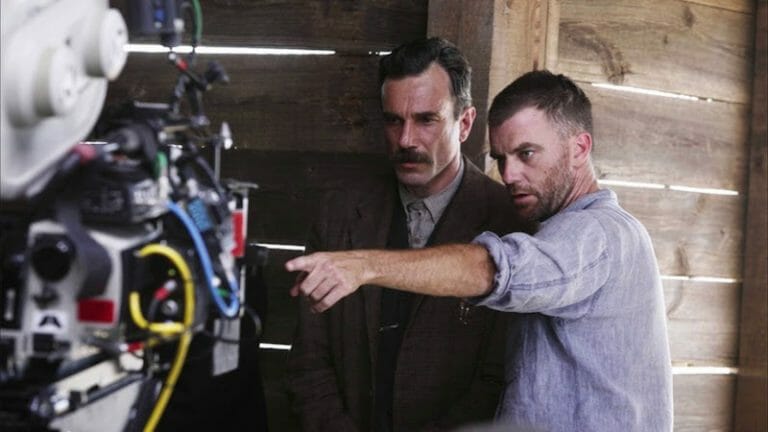By Ken Miyamoto · May 22, 2019

What are some nuggets of screenwriting wisdom from writer and director Paul Thomas Anderson?
Welcome to our ongoing Learning from the Masters and Industry Insiders series where we seek out and feature excellent videos, interviews, and discussions of the art, craft, and business of screenwriting and pull the best words of wisdom, writing tips, and screenwriting advice.
We turn to Paul Thomas Anderson’s brief view into his writing process on The Narrative Art’s YouTube Video and offer brief elaboration on his insightful points.
“If I’ve ever had a theme in mind, I mean, usually that’s just the worst. Then you feel yourself writing. And there’s nothing worse than that feeling of, kind of, chasing after a theme.”
Theme is important for screenplays, and one of the most common questions that screenwriters will face after someone had read and considered their screenplay is, “What’s the theme of the script?“
For Anderson’s process, he fears that pursuit of a theme during the writing process because it then doesn’t feel organic. The true theme of your script will often present itself in the end. And the theme of any story can also be interpreted in many different ways by many different people.
“The better way to go, in terms of better writing, is having two characters that are more opposite. That way you can get more traction.”
Two opposing characters facing one another equate to two opposing forces that are destined to clash. The more opposite they are, the better the conflict. And conflict is what drives the best stories.

“If things are going well and the characters are coming out of you, they’re going to guide you how they’re going to go.”
Sometimes you just have to let the characters guide you instead of you guiding them through the plot. Anderson later equates this to a seance, where the characters start speaking through you, and you aren’t present.
Anyone can plot a story out and inject lines of dialogue to drive that plot. The best writing occurs when the characters truly come to life on the page.
“There’s no better exercise than just to write somebody else’s words down to see how they looked typed out. Just to get you inspired again.”
Anderson was speaking specifically about the time when he took a short story that intrigued him and began to write it out in screenplay form to see if it was something he wanted to adapt.
While he didn’t directly adapt the short story into a screenplay, the practice did inform other works that he was developing,
This is a very out-of-the-box way to go about finding character inspiration. You can certainly use this practice to see if a short story or novel is worth adapting to film or television, but it’s also a process that can help you develop characters.
Listen to the brief interview to hear the words directly from Paul Thomas Anderson!
For all the latest from The Script Lab, be sure to follow us on Twitter, Facebook, and Instagram.
And become a member of TSL 360 to enjoy the LARGEST screenwriting education content library, featuring masterclasses, deep-dive interviews, and lectures from Academy Award-winning screenwriters, TV show-runners, producers, literary managers, agents, studio executives, and leading educators – all in one place.